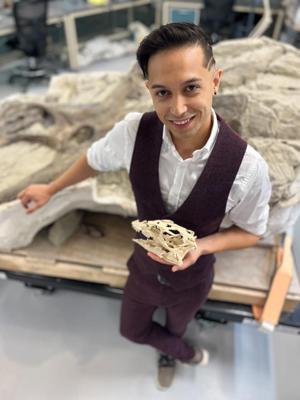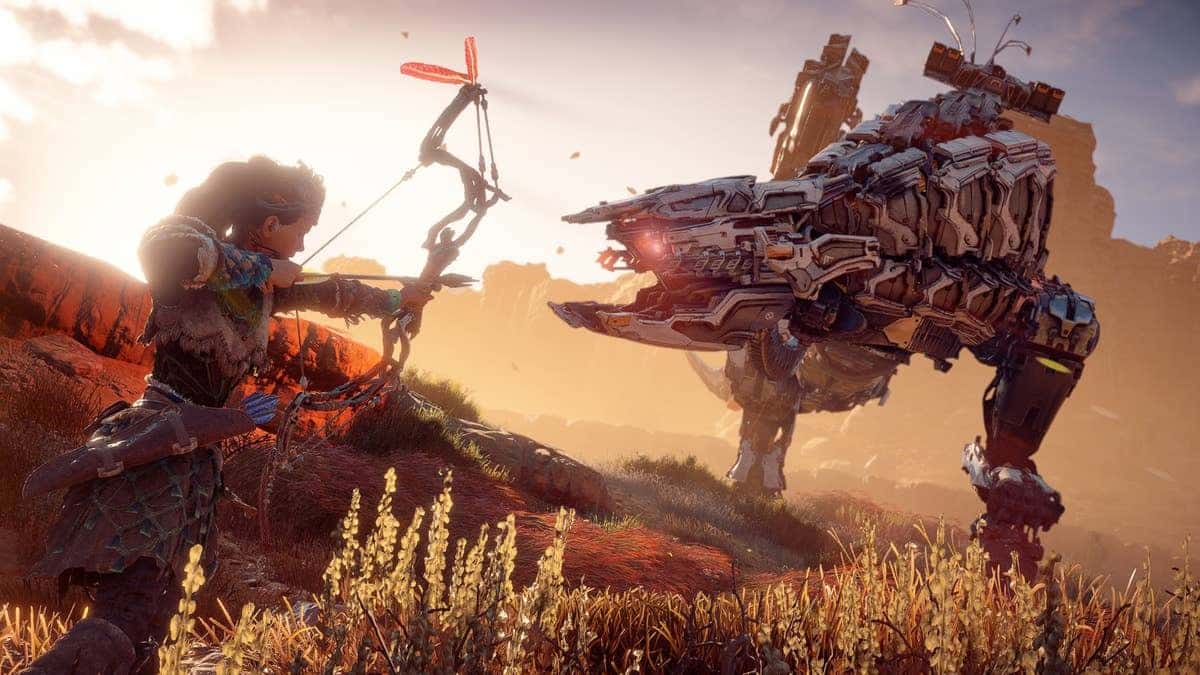Far out in the remote deserts of Utah, a group of researchers discovered a new dinosaur species, a discovery that the study’s author said provides a snapshot of a period in our earth’s history that had until now been unclear. To top it off, the new dinosaur species has been named after a CHamoru Legend. As with other dinosaur species, the new species Fo’na Herzogea, received two names, the first name Fo’na, is CHamoru, the native language of Guam, a U.
S. territory in the Pacific and also the ancestral land of the study’s author, Haviv Avrahami. “Naming a dinosaur is a hard process and it takes a long time.

I think there’s this view that when you name a new dinosaur, it’s discovered one day in the field, and then you give it a name the next day. That’s just not the case. A lot of work has to go into giving a dinosaur a name.
We first started finding these specimens of Fo’na about ten years ago in Utah. Then we had to bring them back to our laboratory in North Carolina and had to prepare them, and I had to study them,” he said. Avrahami, a Ph.
D. candidate with the Department of Biological Science at North Carolina State University, said the dinosaur has been the focus of his study. Before giving it a name, researchers had to first figure out if it was, in fact, a new species.
“The way we do it is kind of complicated, but I want you to imagine you are having dinner one night, and in one hand, you have a chicken leg, and in the other hand, you have a turkey leg. If you hold them up to each other, you will notice that there’s a number of important differences, both with size, shape and with particular features,” he explained. After traveling across the world to research and compare dinosaur species it is closely related to, he concluded that Fo’na was a new dinosaur species.
“Lo and behold, I found that there’s features on Fo’na that are completely unique and new to just it, that’s how I figured out it was a new species. Then I got the privilege to giving it a name as the study’s author that’s focusing on it being part of my project,” he said. The dinosaur’s name pays tribute to Avrahami’s cultural heritage and also advances decolonization efforts in paleontology.
“When I knew that I was getting the privilege of naming Fo’na, I knew that I wanted to honor an indigenous culture. Since this is my first dinosaur that I am naming, certainly not the last, but the first one I am naming I wanted to start with my roots, to honor my own Indigenous culture,” he said. Fo’na comes from the CHamoru legend of creation, the story of Fo’na and Pontan.
According to the etymology section of Avrahami’s study, he found similarities between the new species and the creation story, noting that "from Fo’na’s fossilized body sprang forth the first people at Fuha Rock, imbued with her good spirit.” “This ancestral story for the CHamoru people mirrors the life and death of the thescelosurine dinosaurs at the Mini Troll locality, as there were at least two subadult individuals that may have been male and female. Or perhaps siblings.
Additionally, their bodies fell into the earth, where they too fossilized. This naming, rooted in the story of Pontan’s sacrifice and Fo’na’s love for her brother, highlights the CHamoru values of inafa’ maolek,” the study said. He also wanted to pay tribute to his family, who supported him and helped mold him into who he is today.
"So much of who I am today is due to the love and support of my family, my mother Cynthia Villagomez and my Uncle David Villagomez, who was like a father to me and my brother growing up, and all my aunties and cousins. And I also would like to honor and thank my late grandfather, Joseph Villagomez, and my grandmother, Annie Villagomez, from which I get so much of my personality, qualities and love for life," Avrahami said, adding that his family is from Barrigada, Guam. Avrahami described that the Fo’na was a vibrant and colorful animal, it may have had whiskers and feathers.
“We know that Fo’na was in a really weird group of primitive dinosaurs and some of the dinosaurs that are in this primitive family, ...
we know that some of (them) had feathers at the time, they weren’t like modern bird feathers, they were downy, something like on the bottom of a chicken, so they were very fluffy. But they still could have modified their feathers like a porcupine. But we still wanted to draw it with whiskers because a lot of modern burrowing animals, .
.. they have whiskers, probably to help them navigate (to) their burrow,” he explained.
He said Fo’na was a “really cool dinosaur.” “One thing is that it was a really, really small dinosaur compared to what we’re familiar with, with really big lumbering animals, monsters from a long time ago, that’s kind of historically what we perceive as dinosaurs, but there’s also a lot of really cool small dinosaurs, it’s just that they are a lot harder to find because they don’t preserve as well. But even though it was a small dinosaur, it was still about 7 feet long as an adult.
It would have been as long horizontally as Shaquille O’Neil is tall vertically,” Avrahami said. As babies, they are about the size of a chicken. “But the spectacular thing about this dinosaur is we are really confident that it lived at least part of its life underground,” he said.
“These dinosaurs are from a really poorly understood time during the age of the dinosaurs. They lived 35 million years before T. rex and triceratops, but they lived after animals like allosaurus and stegosaurus, so they’re kind of in the middle.
” The Utah landscape where Fo’na was discovered looked very different from the deserts that exist today. “The landscape looked completely different. In fact, it was the exact opposite, and it looked more like the Florida Everglades.
This is because back then, the entire United States was divided right down the middle by a giant ocean, and Utah was right on the coast of this ancient seaway,” Avrahami said. With this being the first dinosaur named after a CHamoru legend, The Guam Daily Post asked if there was any effort to bring out Fo’na specimens or a replica to Guam and perhaps display it at the Guam Museum for island residents to view. He said while that is not up to him, he did like the idea, noting that museums sometimes take fossils on tour.
“With Fo’na, I think that would be a really cool idea, but I am not yet quite at the point in my career where I can make jurisdiction or decisions on that. ..
. I would hope that whoever is in charge of that, whether it's here at the museum or whoever else, would be open to an idea like that because that would be absolutely awesome,” Avrahami said. He did share that 3-D imaging of Fo’na will soon be available for replicas to be printed.
.



















